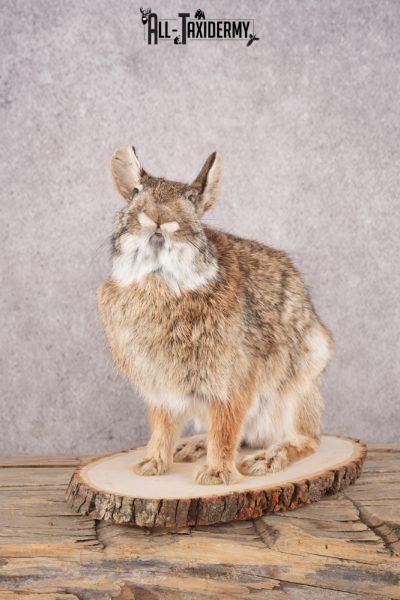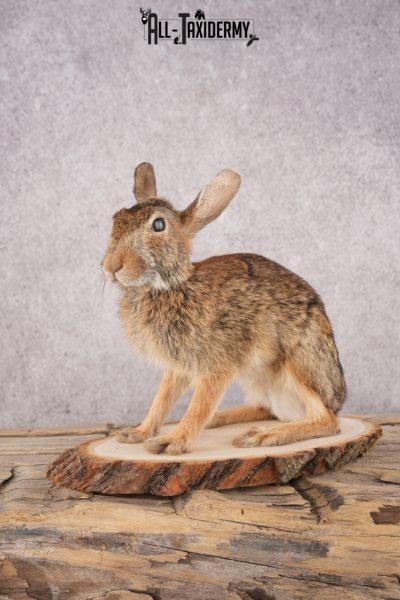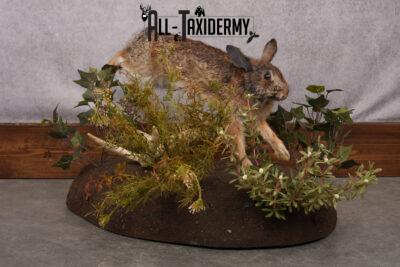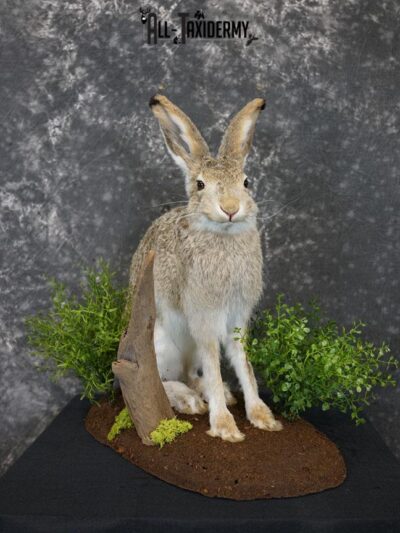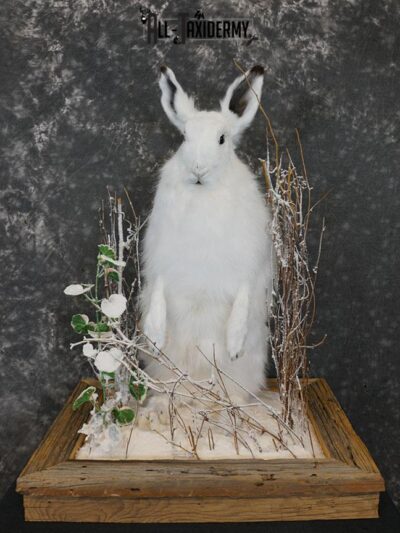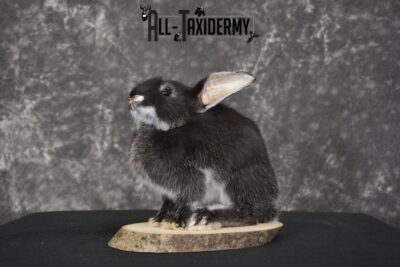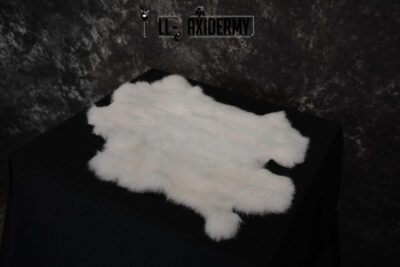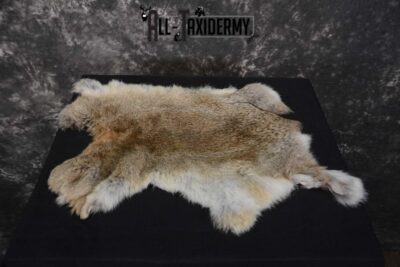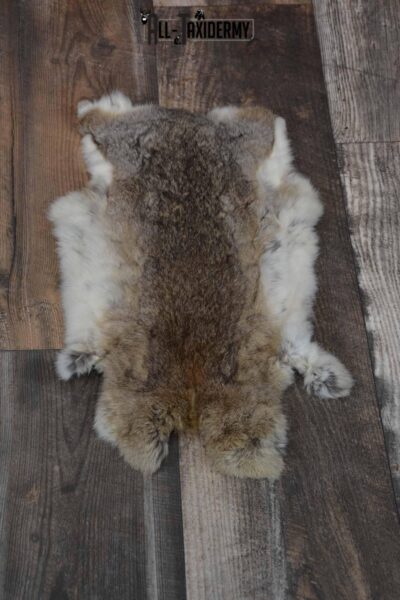

Beautiful Hair ... Read More
Cottontail Rabbit SKU 3151
$795.00-
View Details
 SOLD
SOLDExcellent Bunny Display ... Read More
Cottontail Bunny SKU 3189
-
View Details
 SOLD
SOLDJumping over a Whitetail Deer Shed ... Read More
Full Body Cottontail Rabbit SKU 2629
-
View Details
 SOLD
SOLDAmazing Detail ... Read More
Whitetail Jack Rabbit taxidermy mount SKU 2296
-
View Details
 SOLD
SOLDAmazing White Hide ... Read More
Arctic Hare rabbit taxidermy mount SKU 2310
-
View Details
 SOLD
SOLDNew Very Soft ... Read More
Full body black rabbit taxidermy mount for sale * SKU 2078
-
View Details
 SOLD
SOLDWhite Hide White Leather ... Read More
Snowshoe Hare Rabbit Hide for sale SKU 1621
-
View Details
 SOLD
SOLDAmazing Tan ... Read More
Eastern Cottentail Hare Rabbit Hide for sale SKU 1620
-
View Details
 SOLD
SOLDOutstanding Display ... Read More
2 Full body coyotes with rabbit taxidermy mount SKU 1659
-
View Details
 SOLD
SOLDVery Soft ... Read More
Cottontail rabbit hide pelt taxidermy for sale SKU 1209
-
View Details
Rabbit Taxidermy Mounts
If you’re looking for small prey mammals to add to your North American or Eurasian taxidermy collection, look no further than All-Taxidermy. Based in Wrightstown, WI, we provide professional taxidermy services for various species of rabbit – from the beautiful white Arctic Hare, to the western Jack Rabbit, to the grass-dwelling Eastern Cottontail. The rabbit is perfect for displaying your home, cabin, store, nature center, or museum for educational purposes.
If you have questions about your custom rabbit taxidermy project, please don’t hesitate to contact our team online or by phone at 888-983-3886.
Browse All Rabbit Taxidermy Online
The rabbit may be small, but shouldn’t be overlooked as a possibly eye-catching taxidermy display to add to your North American mammal collection! At All-Taxidermy, we have have a wide variety of Arctic Hare, Eastern Cottontail, Jack Rabbit, Snowshoe Hare, and Domestic Rabbit species available online or for custom order.
Let’s explore each species of rabbit below:
Rabbit Taxidermy by Species
Arctic Hare (Lepus arcticus)
Well-adapted to the frigid cold temperatures of the Arctic tundra, the Arctic Hare (Lepus arcticus), is the perfect addition to your Arctic taxidermy collection. This small mammal features a stunning white coat during the winter months, short ears and limbs, a small nose, and body fat which makes up around 20% of its body weight. During the summer, the Arctic Hare’s fur appears brown instead of its characteristic winter white coat. Common predators of the Arctic Hare include the Arctic Fox, Red Fox, Wolf, Canada Lynx, Ermine, Snowy Owl, Gyrfalcon, and the Rough-Legged Hawk.
This rabbit species will look great paired with other Arctic species in your taxidermy collection like the Polar Bear, Snowy Owl, Reindeer/Caribou, Musk Ox, Snow Goose, Arctic Fox, Walrus, various seal species, marine birds like the Puffin, Canada Lynx, and Moose, just to name a few. You can have us custom create a scene of an Arctic Fox or Canada Lynx pursuing the Arctic Hare in an impressive predator/prey taxidermy mount, along with a custom habitat to make the scene really stand out.
Eastern Cottontail (Sylvilagus floridanus)
The most widespread and populous rabbit species in North America, the Eastern Cottontail, scientific name Sylvilagus floridanus has 17 recognized subspecies and lives throughout the Eastern and Midwest United States, with populations in Southern Canada, parts of Mexico, Central America, and in the northern regions of South America. The Eastern Cottontail is a key prey animal and important part of the ecosystem for various predators such as foxes, hawks, and owls.
The Eastern Cottontail rabbit often has a distinctive white spot on its forehead. Its fur ranges in color from a reddish-brown to a grayish-brown. This small mammal is known for its long ears, large hind feet, and short, fluffy white tail. The Cottontail is a highly adaptable species, living and grazing in meadows, shrubby areas, swamps, and forest edge habitats throughout the United States, Canada, Mexico, and Central and South America.
Our team suggest displaying your rabbit taxidermy by itself standing or grazing among brush, or as a prey animal being pursued by a fox, coyote, owl, bobcat, or lynx for a dynamic taxidermy display!
White (Lepus townsendii) & Black-Tailed Jackrabbit (Lepus californicus)
The White-Tailed Jackrabbit lives in the plains, prairies, and alpine meadows of the Western and Central parts of North America. This species can be found in Canada, Washington, Oregon, California, Nevada, Utah, Idaho, Montana, Wyoming, Colorado, New Mexico, North and South Dakota, Nebraska, Kansas, Minnesota, Wisconsin, Iowa, Missouri, and Illinois. The White-Tailed Jackrabbit is solitary except when breeding or when females are with their young. This species feeds on grasses, buds, twigs, and bark from low shrubs.
Native to the mountainous, prairie, and desert regions of western United States and Mexico, the Black-Tailed Jackrabbit is characterized by its long, distinctive ears and long, powerful hind legs, which enable them to reach speeds of up to 40 miles per hour. The rabbit’s long ears act like radiators to help them cool down in hot, dry climates. The Jackrabbit has dark buff fur peppered with black markings, with white undersides. Its diet consists of shrubs, small trees, grasses, seeds, beans, and cacti.
Instead of burrows, during the day, Jackrabbits will rest in the shade under grass or bushes. They are social animals, living in groups of up to 25 or more. The female Jackrabbit will give birth to 1-2 babies at one time. Jackrabbit young are called leverets and are born with fur and their eyes open. Although its called a Jackrabbit, this species is actually a hare, along with the Arctic Hare, Alaska Hare, Antelope Jackrabbit, and the White-Tailed Jackrabbit.
Various species of hawk, owl, eagle, coyote, fox, bobcat, lynx, cougar, wolf, and domestic dogs and cats will prey on the White and Black-Tailed Jackrabbit species. Showcase your Jackrabbit taxidermy running from a coyote or fox on the hunt with a custom habitat for an impressive taxidermy display! Check out all our available Jackrabbit taxidermy mounts here.
Snowshoe Hare (Lepus americanus)
At All-Taxidermy, we have rabbit pelts available for display to showcase the animal’s beautiful white or brown fur. Rabbit fur is quite thick and dense to help keep them warm during the winter months – this is especially true of the Arctic and the Snowshoe Hare.
The Snowshoe Hare, native to a wide range of Northern Canada, to the Rocky Mountain region in the United Sates, to the state of Alaska, gets its name from its large hind feet which help it run and hop easily on top of deep snow. The Snowshoe Hare has a beautiful white coat during the winter months (much like its cousin the Arctic Hare), which changes to a brown coloration during the summer.
Snowshoe Hare litters average between three to five leverets, and like other hare species, the young are born fully furred with open eyes. This hare species prefers to eat green vegetation, buds, twigs, evergreen needles, and bark.
Shop Rabbit Taxidermy Online
All-Taxidermy can also create custom taxidermy pieces of domestic rabbit mounts, or other species of rabbits otherwise not listed here. At our taxidermy store, we care about the detail and accuracy of the species that we’re working with. From the Eastern Cottontail, to various hare species, we focus on making this fast prey animal come to life in any small mammal exhibition or North American taxidermy collection.
Need a custom quote? We’ve got you covered! Please contact our team online, or give us a call at 888-983-3886 today to discuss your rabbit or hare taxidermy piece.


